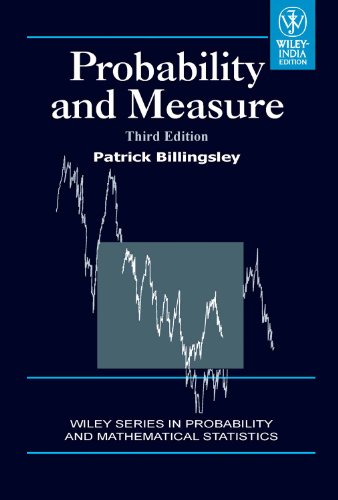=+CASE 3. rsas;ss. By (7.30), A(r,s) =pQ(2a) -p[ p+qQ(2s-1)] -q[ pQ(2r)]. From ; < ssr+s = 2a
Question:
=+CASE 3. rsas;ss. By (7.30), A(r,s) =pQ(2a) -p[ p+qQ(2s-1)] -q[ pQ(2r)].
From
;< ssr+s = 2a ≤ 1, follows Q(2a) = p + qQ(4a - 1); and from 0 ≤2a - - ≤ ;, follows Q(2a -; )=pQ(4a-1). Therefore, pQ(2a) =p2+
qQ(2a - ; ), and it follows that A(r, s) = q[ Q(2a - }) - pQ(2s - 1) - pQ(2r)].
Since p ≤q, the right side does not increase if either of the two p's is changed to q. Hence A(r,s) ≥ q max[ A(2r,2s -1), A(2s-1,2r)].
The induction hypothesis applies to 2r ≤ 2s - 1 or to 2s - 1 ≤ 2r, as the case may be, so one of the two A's on the right is nonnegative.
Fantastic news! We've Found the answer you've been seeking!
Step by Step Answer:
Related Book For 

Probability And Measure Wiley Series In Probability And Mathematical Statistics
ISBN: 9788126517718
3rd Edition
Authors: Patrick Billingsley
Question Posted:






